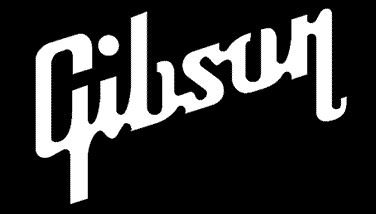Learn To Play Rock Guitar
Beginner rock guitar lessons for n00bs and rusty rockers
Gibson Guitars
|
|
Gibson guitars are legendary in rock music. From the time the first Gibson Les Paul hit the scene in 1952, they have been one of the most popular guitar designs ever.
Like the Fender Telecaster and Stratocaster, the Gibson Les Paul has been copied by countless companies trying to capitalize on that popularity. From cheap knock-offs to expensive boutique guitars, you'll find Les Paul styles all over the place.
Just check out how cool Jimmy Page looks with his sunburst Les Paul or double-neck EDS-1275. I’d go out on a limb and say Jimmy Page and Led Zeppelin probably did more for making the Gibson Les Paul the rock guitar of choice than any other rock guitarist.
In the beginning...
Before the Les Paul came out, the company claims to have been making electric guitars since 1924, with hollow-body and semi-acoustic models through the 1940s. The company actually started in the mid-1890s with acoustic guitars and mandolins. For more info about the history of Gibson Guitars, this article from ChasingGuitars.com takes you back to the beginning.
When Fender put out their first solid-body electric in 1948, it took Gibson about four years to respond with the Les Paul. Here’s more in depth info about the Gibson Les Paul.

But while Fender has stayed with the double cut-away body design, bolt-on neck and single-coil pickups for most of it’s models, Gibson Guitars focused on growing the Les Paul presence, which featured a set-neck, single cut-away body and Humbucking pickups.


In the late 1950’s, Gibson introduced some far out designs, the Explorer and Flying V. These were a bit ahead of their time – it took another twenty years for these to become popular.
At that time (the late 70's/early 80's) you started seeing other companies copying the Flying V and Explorer. Hamer and Dean had their versions, and today there are variations of the original designs all over the place.
Today, Gibson Guitars offers re-issues of the 50's style Explorer and Flying V (not to mention all the Les Paul re-issues). There is also a Reverse Flying V, which inverts the "V" both on the headstock and body. If you want a truly unique design, the Reverse Flying V will not disappoint!

Another popular model in the Gibson line up is the SG model. The company put it out in 1961 to try and compete with Fender’s Stratocaster.
The first year's run was actually labeled a Les Paul, but Les Paul (the guy responsible for the Les Paul design) didn't like it and asked that Gibson rename the guitar. So that’s why it’s called an SG, which apparently stands for "solid guitar". More info about the SG here!
Gibson Grows...
Over the years Gibson (well, actually CMI, Gibson's parent company) has acquired a number of other well-known musical instrument companies, allowing them to cover the needs of musicians other than guitarists. In fact, Gibson Guitars can almost handle the needs of the whole band! For keyboards, they own Wurlitzer and Baldwin. For drums, it’s Singerland.

Gibson’s Firebird series was another introduced during the 1950’s. With the reverse headstock and "banjo" tuners, Gibson added to their unique style offerings. Here’s the Firebird background.
They also make bass guitars from the Gibson SG and Firebird guitar models (actually, they've called the bass model the "Thunderbird").
The Steinberger Sound company became part of Gibson in 1987. This company produces "headstock-less" guitars and basses which were very popular in the early 1980’s because of the unique design. That’s not to say they’ve lost any popularity with players that know about Steinberger, though.
For hot guitars popular in heavy metal bands, Gibson Guitars also owns the Kramer Guitar Company. In fact, for a couple of years in the 80's, Kramer guitars outsold Gibsons! A very interesting history of the company can be found here and here.
One of Gibson’s earliest and biggest competitors, the Epiphone Guitar Company was purchased in 1957. Hey, if you can't beat ’em into submission, buy ’em!
Epiphone was an American company, which was a surprise for me, because I always thought the company was Japanese. I’m not completely whacked – Gibson moved Epiphone production to Japan in 1970.
One thing to be said for Epiphone guitars – you can get your favorite Gibson guitars for a lot less money ’cause they have the Epiphone name on them instead of Gibson. But they're essentially the same guitar.
And Today...
You have many choices from the Gibson line. There’s new productions of your favorite models, a different "Guitar of the Month" featured by Gibson on the website and by retailers.
There’s re-issues of vintage and signature models from your favorite guitarists. For instance, Gibson Guitars just came out with a Joan Jett Signature Melody Maker guitar; there’s also the Jimmy Page Signature Double Neck. Slash has had the recent issuance of Slash’s Signature Models. These are just a few of the available signature models.
And let’s not forget about the infamous, innovative "Robot Guitar", released for the first time in December 2007. This sucker tunes itself in at least half-a-dozen standard and alternate tunings! It also adjusts itself for intonation. Think about changing tunings between songs quickly and accurately. Need to change from standard to Drop D? Just pull the knob, pick the tuning and watch it go – Pretty cool!
Why don’t you slide on over to Gibson’s website to check out all they have to offer you. I’m only scratching the surface here!
|
|


